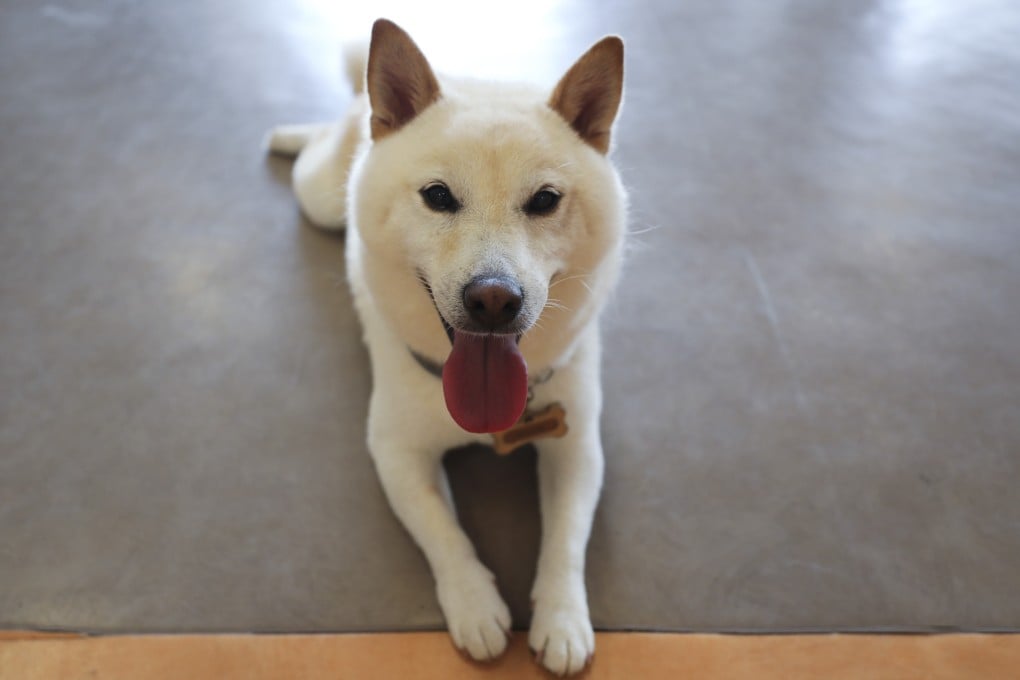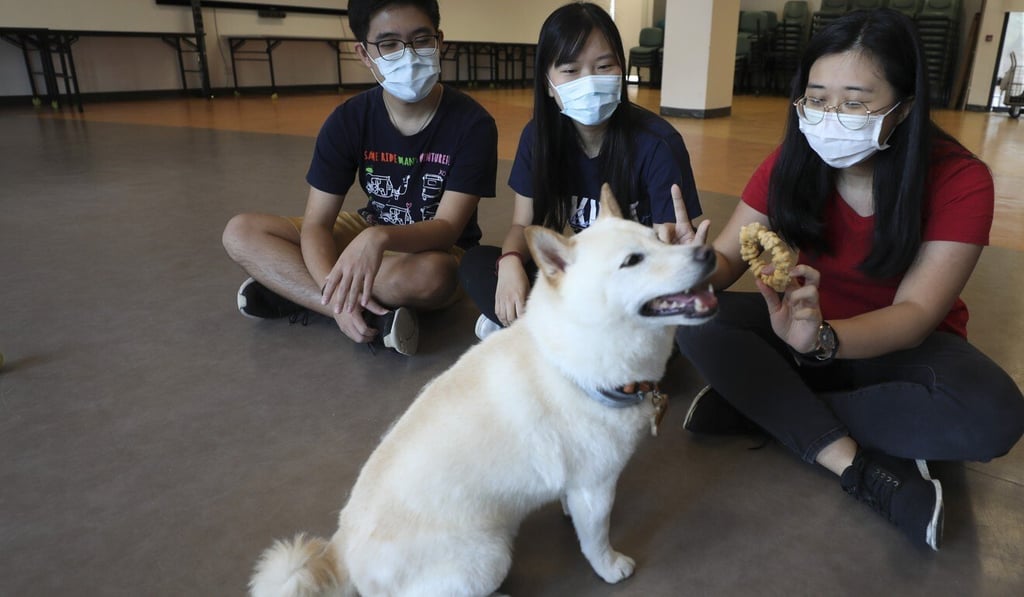Gohan the therapy dog helps Hong Kong University of Science and Technology students to keep stress at bay
- The four-year-old Shiba Inu has been with the university’s animal-assisted therapy programme since last year
- Students are allowed to interact with him during one-hour mingling sessions

Gohan greets visitors with excitement, jumping up and licking their faces, and holds a special role on Hong Kong University of Science and Technology’s campus to help relieve student stress.
The four-year-old Shiba Inu has served as an in-house therapy dog at HKUST under an animal-assisted support programme introduced at the university last year.
“Studying can get stressful with a lot of assignments. It is relaxing to join a therapy dog session when I don’t have to think about any other things but enjoyment,” said Candy Tang Hau-tung, a final-year student majoring in electronic engineering.
“I learned how to interact with dogs, communicate with them and understand their emotions. The experience is new to me,” added 22-year-old, who has never had a dog or cat as a pet.

Gohan, who was first adopted by a residence master at the university when he was around six months old, was granted an exemption from its no-pet rule and allowed to stay on the Clear Water Bay campus last year as a therapy dog.